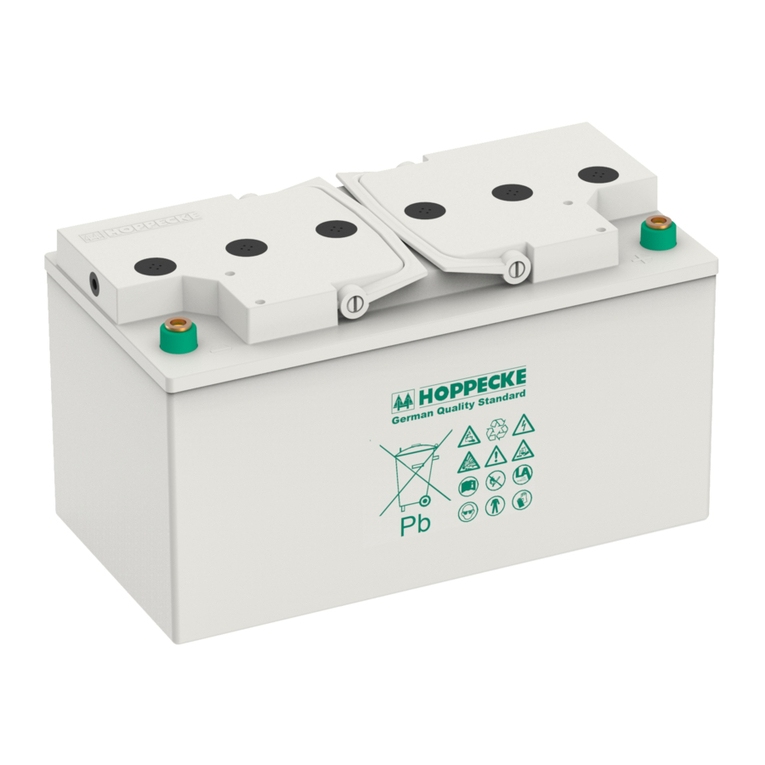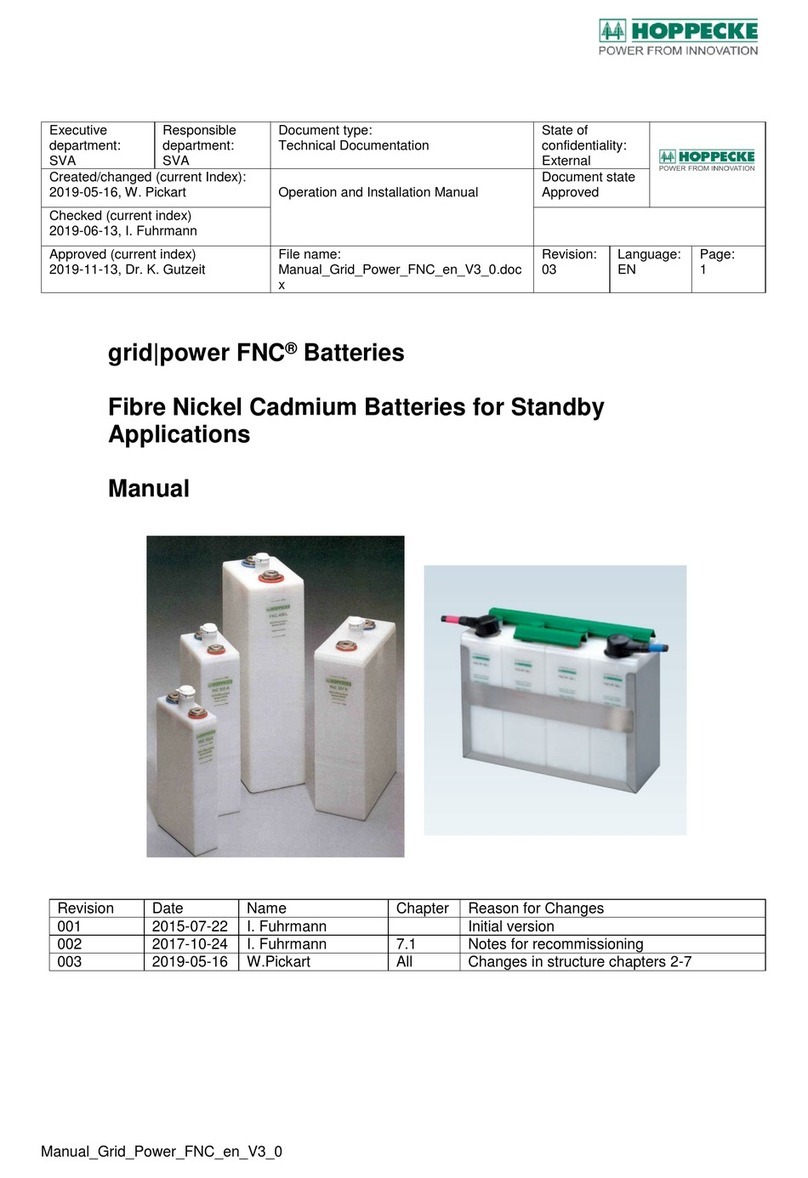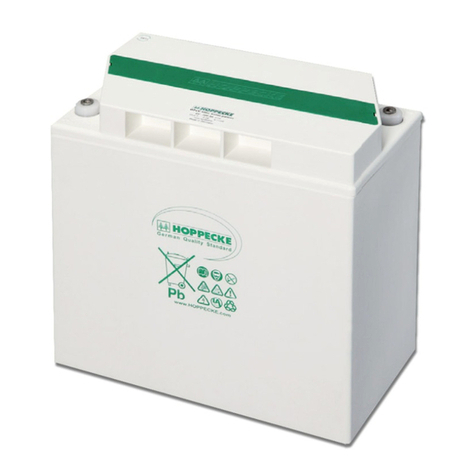Table of contents
Preface .................................................................................................................................................. 3
Symbols .............................................................................................................................................. 4
0 Safety notices..................................................................................................................................... 5
0.1 General Information ................................................................................................................ 5
0.2 Safety instructions for working with lead-acid batteries .............................................................. 8
1 General Information ............................................................................................................................ 12
1.1 Safety precautions .................................................................................................................. 12
1.2 Technical Data ...................................................................................................................... 12
1.2.1 Excample for single cell ......................................................................................................... 12
1.2.2 Identification plate battery ...................................................................................................... 13
1.3 CE-Mark ................................................................................................................................ 13
1.4 Disposal and recycling ........................................................................................................... 13
1.5 Service ................................................................................................................................. 13
2 Safety ............................................................................................................................................ 14
2.1 General ................................................................................................................................ 14
2.2 Personal safety equipment, protective clothing, equipment ...................................................... 14
2.3 Safety precautions ................................................................................................................ 14
2.3.1 Sulfuric acid ......................................................................................................................... 14
2.3.2 Explosive gases .................................................................................................................... 15
2.3.3 Electrostatic discharge .......................................................................................................... 16
2.3.4 Electric shock and burns ....................................................................................................... 17
3 Transport ........................................................................................................................................... 18
3.1 General ................................................................................................................................. 18
3.2 Delivery completeness and externally visible damage .............................................................. 18
3.3 Latent defects ........................................................................................................................ 19
4 Storing batteries before installation .................................................................................................... 20
4.1 General ................................................................................................................................ 20
4.2 Storage time ......................................................................................................................... 20
4.3 Preparing for a several-month storage period .......................................................................... 20
5 Installation ....................................................................................................................................... 21
5.1 Demands on the erection site ................................................................................................ 21
5.1.1 Calculation of safety distance ................................................................................................ 23
5.2 Filling the cells ..................................................................................................................... 24
5.2.1 Check .................................................................................................................................. 24
5.2.1.1 Ventilation - preventing explosion ........................................................................................... 24
5.2.1.2 Ventilation - calculation for ventilation requirements of battery rooms ....................................... 24
5.3 Conducting an open-circuit voltage measurement .................................................................... 26
5.4 Installation tools and equipment ............................................................................................ 26
5.5 Rack Installation ................................................................................................................... 27
5.6 Cabinet Installation ............................................................................................................... 28
5.7 Handling the batteries ........................................................................................................... 29
5.8 General information on connecting the batteries ..................................................................... 29
5.9 Putting the cells/blocks into the racks ................................................................................... 30
5.10 Connecting the batteries ....................................................................................................... 32
5.10.1 Connection terminals ............................................................................................................ 32
5.10.2 Type of connection cable ....................................................................................................... 32
5.10.3 Clamping batteries using battery connectors ........................................................................... 32
5.10.4 Installing the screwed connectors .......................................................................................... 33
5.10.5 Clamping connection plates onto the batteries ....................................................................... 33
5.11 Connect the battery system to the DC power supply ................................................................ 34
5.12 Commissioning charge (initial charge) .................................................................................... 35
5.12.1 Commissioning charge with constant voltage (IU characteristic curve) ...................................... 35
5.12.2 Extended commissioning charge ............................................................................................ 35
6 Battery operation ............................................................................................................................... 36
6.1 Unloading ............................................................................................................................... 36
6.2 Charging - general ................................................................................................................... 36
6.2.1 Standby parallel operation ....................................................................................................... 38
6.2.2 Floating operation ................................................................................................................... 39
6.2.3 Switch mode operation (charge/discharge operation) ................................................................ 39
6.2.4 Float charging ......................................................................................................................... 39
6.2.5 Equalizing charge (correction charge)........................................................................................ 40
7 Charging of HOPPECKE sun| power VR L battery in Solar Applications ................................................... 42
7.1 Charge and discharge parameters............................................................................................ 42
7.2 Alternating currents................................................................................................................. 43
7.3 Temperature influence on battery performance and lifetime ....................................................... 43
7.3.1 Temperature influence on battery capacity................................................................................ 44
7.3.2 Temperature influence on battery service life ............................................................................ 44
7.4 Influence of cycling on battery behaviour .................................................................................. 44
7.4.1 Endurance in cycles depending on depth of discharge ............................................................... 45
7.4.2 Endurance in cycles depending on ambient temperature............................................................ 45
7.4.3 Electrolyte freezing point depending on depth of discharge (DoD)............................................... 46
7.5 Remarks to warranty management ........................................................................................... 47
8 Battery maintenance .......................................................................................................................... 47
8.1 Work to be performed every six months.................................................................................... 47
8.2 Work to be performed annullay ................................................................................................ 48
8.3 Cleaning of battery.................................................................................................................. 48
9 Testing the battery system................................................................................................................. 49
9.1 Performing the capacity test (short form) .................................................................................. 49
9.2 Performing the capacity test (extended version) ........................................................................ 49
9.3 Capacity test of the battery...................................................................................................... 51
10 Fault Retification ............................................................................................................................. 53
11 Required ventilation for hydrogen generated by batteries................................................................... 53
12 Disassembly..................................................................................................................................... 54
Inspection protocol................................................................................................................................ 55
Safety data sheet.................................................................................................................................. 56

































